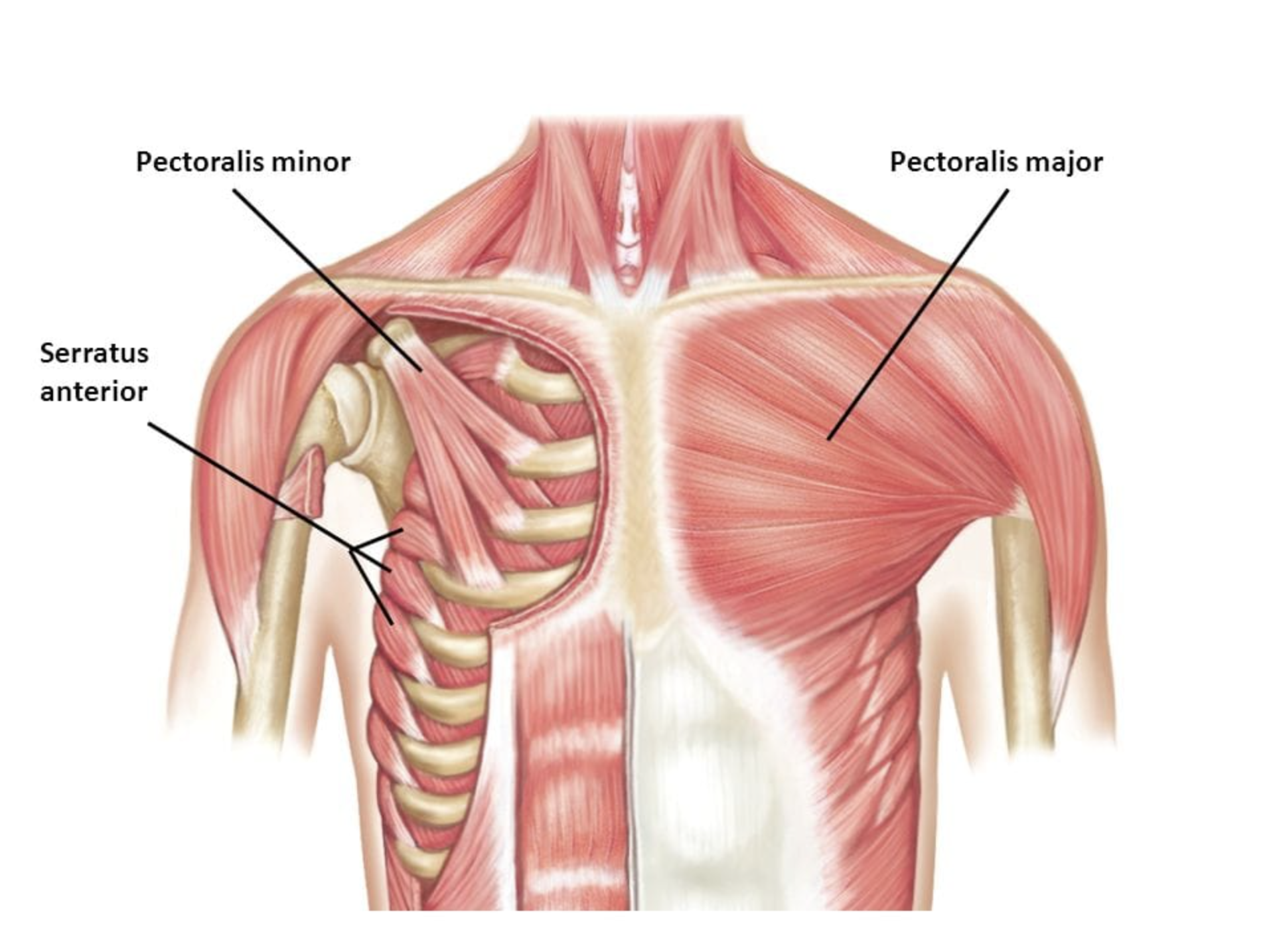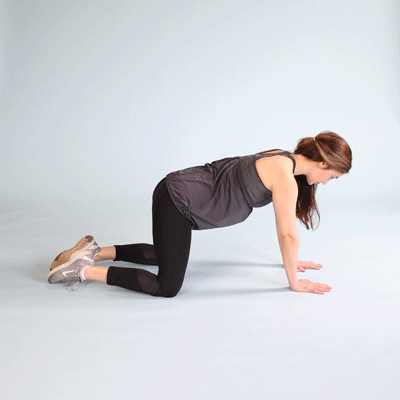The 4 Best Stretches For A Strained Chest Muscle
The large muscle in the chest called the pectoralis major, works alongside the smaller pectoralis minor to move the arm, particularly for pushing motions. A strained chest muscle, also known as a pectoral strain, can be a painful and limiting injury that impacts daily life. It can occur during a strenuous workout, when lifting heavy objects, or from poor form during exercises. Whatever the cause, a strained chest wall requires proper care and rehabilitation for a full recovery.
One crucial aspect of recovery is consulting a physiotherapist for targeted exercises that not only aid healing but also prevent future pectoralis injuries. Keep reading to explore the best stretches to help recovery after a strain in the chest muscles.
Understanding Chest Muscle Strain
The pectoral muscles are located in the chest region and play a significant role in various upper-body movements, including pushing and lifting. When these muscles are subjected to excessive force or overuse, small tears can occur in the chest muscle fibers, resulting in a strained chest muscle. Here you can see the small pec minor muscle, which lies underneath the large pec major muscle.
Strained Chest Muscle Symptoms
So, what does a strained chest muscle feel like? The symptoms of a strained chest muscle include:
Pain in or around the chest wall
Tenderness or soreness in the pectoral muscles
Weakness in the arms or shoulders
Muscle spasms or swelling
Reduced range of motion
Difficulty with arm motions like pushing or lifting
For any unexplained or unusual symptoms, known as “red flags”, such as shortness of breath or chest palpitations, be sure to seek immediate medical attention as this may indicate a more serious underlying issue.
Common Causes Of Chest Muscle Strain
Common causes of chest muscle strain include intense exercises, especially those involving bench pressing or throwing, which can put additional strain on the pectoral muscles. Additionally, repetitive movements in sports like swimming, baseball, volleyball and tennis can contribute to muscle strain, especially if not accompanied by proper warm-up and cool-down routines. Poor exercise form and inadequate rest periods between workouts can also increase the risk of chest muscle strain.
How To Treat A Strained Muscle
Before embarking on any treatment routine, it's crucial to seek help from a trained health professional, such as a physiotherapist, on how to heal a strained chest muscle. A physiotherapist can assess the extent of the injury and provide personalized advice on the appropriate treatment plan and when to initiate stretching exercises. In some cases, stretching the pec muscles after a strain may worsen the injury, so it’s critical to get the right advice.
Alongside specific prescribed exercises, the physiotherapist may incorporate other strained chest muscle treatments into the recovery. This may include the R.I.C.E. method - Rest, Ice, Compression, and Elevation – as a first approach to manage pain and inflammation in the acute phase of the injury. Allowing the body to rest and avoid activities that exacerbate the pain is also important. Depending on the severity of the strain, it may take several days to a few weeks for the muscle to heal adequately to start any exercises, including stretching.
The Four Best Stretches For A Strained Chest Muscle
After the necessary precautions and allowing sufficient time for initial healing, the physiotherapist may suggest a few key stretches to help improve symptoms and rehabilitate the chest muscles. The following are four stretches a physiotherapist may suggest for promoting recovery in a strained chest muscle:
Stretch 1: Pectoralis Major Stretch
As the pectoralis major is the largest muscle in the chest, stretching it can alleviate tension and discomfort. To perform this stretch, the physiotherapist will direct:
Stand upright with your feet shoulder-width apart.
Find a sturdy vertical surface like a wall and extend your arm at shoulder height, placing your forearm and palm flat against the surface.
Slowly rotate your body away from the extended arm, allowing your chest muscles to stretch gently.
Repeat the stretch on the other side.
This stretch targets the pectoralis major muscle group and can be particularly beneficial for patients with muscle tension after a chest muscle injury.
Stretch 2: Doorway Stretch
The doorway stretch is commonly prescribed by physiotherapists to stretch both the pectoralis major and the pectoralis minor muscles, promoting greater chest mobility. To perform this stretch:
Stand in a doorway with your feet together.
Bend your elbows at a 90-degree angle and place your forearms on the doorframe, ensuring your elbows are at shoulder height.
Take a small step forward with one foot, gently leaning into the doorway until you feel a comfortable stretch in your chest.
Maintain a neutral spine and avoid excessive arching in the lower back.
Repeat the stretch on the other side, stepping forward with the other foot.
The doorway stretch allows for controlled and adjustable stretching, making it suitable for patients with varying degrees of flexibility during the rehabilitation process.
Stretch 3: Chest Opener Stretch
The chest opener stretch targets the chest and front shoulder muscles, used by physiotherapists to help release muscle tension and increase flexibility. There are several variations of this stretch, but the basic version can be performed as follows:
Sit or stand with your spine straight and shoulders relaxed.
Interlace your fingers behind your back, with your palms facing inward.
Gently lift your arms while keeping them straight and your chest open, feeling the stretch in your chest and shoulders.
Keep the neck and jaw relaxed.
Release the stretch slowly and repeat at the direction of the physiotherapist.
This stretch is particularly useful for those experiencing muscle tension in the front of their shoulders and chest.
Stretch 4: Child’s Pose
For a gentle stretch of the chest wall, Child’s Pose is an excellent way to target the pectoralis major while maintaining proper alignment. To perform this stretch:
Start on your hands and knees in a tabletop position.
Ensure wrists are directly under shoulders and knees under hips.
Gently walk the arms forwards until the forehead rests on the mat while sitting your buttocks back onto your heels.
Hold for several seconds at the direction of the physiotherapist.
To exit, take a deep breath in and walk your hands back towards your knees.
Additional Tips For Recovering From An Injury
In addition to incorporating the four best stretches for a strained chest muscle, there are other supportive measures to enhance your recovery process:
Incorporate A Proper Warm-up Routine
Before engaging in any stretching or physical activity, be sure to complete a proper warm up. A dynamic warm-up that includes light cardio exercises and dynamic stretches can prepare the chest muscles for stretching and reduce the risk of further strain.
Stick To Low-Impact Exercises
While your chest muscle heals, consider engaging in low-impact exercises that do not place direct stress on the affected area. Activities like walking, swimming, or stationary cycling can maintain an overall fitness level without compromising the recovery process.
Nutrition And Hydration
Proper nutrition plays a crucial role in the healing process. Consider consulting a health professional to ensure a balanced diet rich in nutrients that support muscle recovery, such as protein, antioxidants, and essential vitamins. Additionally, staying hydrated is essential to maintaining muscle function and overall well-being.
Book Now
Recover Faster With Physiotherapy
Recovering from a strained chest muscle requires proper treatment and support. By seeking help from a physiotherapist and adhering to a comprehensive recovery plan, it is possible to regain flexibility and prevent future injuries after a chest muscle strain.















